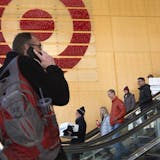A frustrating two years for cord-cutting sports fans should come to an end, at least in part and at least for now, on Monday.
That's when Bally Sports is slated to launch a new standalone app, giving in-market fans access to the regional sports networks they lost when streaming services like Hulu and YouTube TV dropped them in the fall of 2020.
For Minnesota sports fans, $19.99 a month will provide access to all the Wolves and Wild games this season on Bally Sports North. The Twins, it should be noted, are not as of now available via the standalone app.
But the launch of the app also brings about a new set of questions. And it comes at a time when Diamond Sports — which operates the 21 Bally regional sports networks and is owned by Sinclair Broadcast Group — is reportedly under enough financial duress that it might be forced into bankruptcy.
In that scenario. the three major pro sports leagues tied most closely to RSNs — the NBA, NHL and MLB — could end up buying out Diamond Sports and running the operation, the New York Post reported this week.
What that all means for sports fans is a fascinating question. Jason Gurwin from The Streamable joined me on the Daily Delivery podcast Thursday with excellent perspectives and insights.
In regard to the price point for the Bally Sports standalone monthly subscription, Gurwin said he thinks $19.99 strikes a reasonable balance between satisfying cable companies and consumers. He said the relative success or failure of the endeavor will hinge more on quality than price.
"It will come down to how good they can actually make the product," said Gurwin, noting that there have been several user complaints with the existing Bally Sports app. "I don't think the $19.99 will be so cost-prohibitive for a fan who cut the cord. ... It's a decent alternative."



